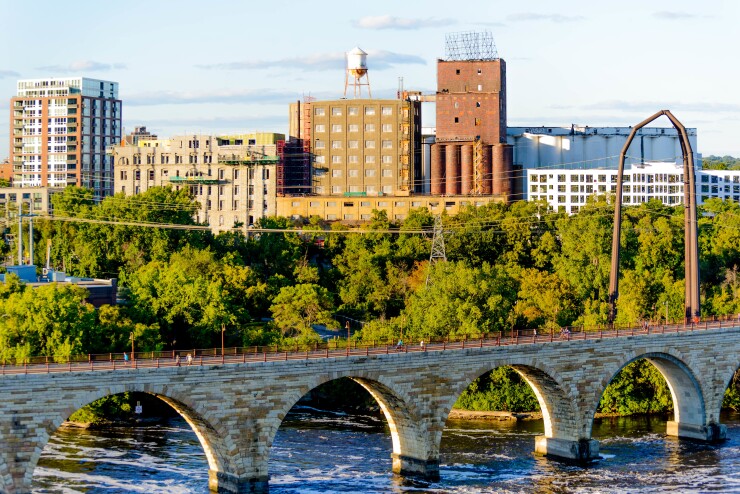The Twin Cities housing market, after one of the most frenetic summers on record, is beginning to cool.
Home sales are down from a year ago, more sellers are cutting their asking price and mortgage rates are climbing. Surveys last week showed 30-year rates approaching or crossing 5%, the highest they've been in seven years.
Aaron Terrazas, a senior economist at Zillow.com, said that although the economy is strong, rising rates can cause a psychological chill.
"People have been receiving news of a looming slowdown," Terrazas said. "They're starting to take that into account, and they're being more conservative in their bidding than a year ago."
The market remains strong, with homes selling in an average of 40 days. And a seasonal slowdown is normal, data from S&P Dow Jones Indices show, even during the long-running recovery in which prices have risen more than 60% from the low.

But, beyond seasonal fluctuations, there are signs that the market is changing. As recently as April, Zillow's data showed that just 11% of sellers with homes on the market had reduced their price, the lowest level this decade. By August, 17% had done so, more than at any time since 2015.
Sale prices are up from last year, but less dramatically. In February, for example, prices were up more than 12% from a year earlier, according to the Minneapolis Area Association of Realtors. By August the annual increase was 6.3%.
Throughout the recovery, a shortage of listings has helped drive prices up, at first because homeowners were reluctant to sell at depressed prices. But this shortage is also keeping many would-be buyers on the sidelines, as they opt to rent or stay put.
During the first eight months of the year, there were 4.8% fewer closings than the year before.
"Buyers are weary," said William Huffman, a sales agent with Remax Results in Minneapolis. "They're sick of hearing that it's a sellers' market."
The new dynamic is higher mortgage rates, after a decade in which they remained unusually low.
On Thursday, a weekly survey by Freddie Mac showed that the average 30-year fixed rate mortgage this week topped out at 4.9%, the highest level since April 2011 and one of the largest weekly increases in mortgage rates since the 2016 presidential election. Other surveys show rates above 5%.
Terrazas said that while housing affordability is still excellent by historical standards, 5% is a threshold that will be a test for buyers. He said that's especially true for first-timers who don't remember the double-digit rates of the 1980s.
Given the rapidly changing nature of the market, Huffman and other agents are warning sellers that buyers are on the defensive. He's now including a clause in some listing agreements that asks sellers to approve an automatic price reduction if the house doesn't sell in 10 to 14 days.
He used that strategy with Kayla and Matt Dutton, who listed their house in Otsego right before Labor Day.
They had numerous friends and family members who sold their houses earlier in the spring who had multiple offers, so they were optimistic when Huffman initially listed the house at $300,000. But when it didn't sell within a week, they started to get nervous.
Then a $10,000 price reduction triggered multiple bids. "We decided to swallow our pride and discount it a small amount to attract more buyers," Kayla Dutton said. "It's still a great sellers' market, but not as hot as it was a short while ago."
Data from MAAR show that so far this year about a quarter of all homes that sold through a Realtor in the 13-county metro had a price reduction, a steep increase from this summer.
The bulk of the discounts are on the most expensive houses in the Twin Cities, according to Zillow. Among the top one-third most-expensive listings, one in five sellers offered a discount — nearly twice as many as the bottom one-third of all listings.
Those price reductions tended to be most common in third-ring suburbs that were developed in the 1980s and 1990s and are flush with big houses that need updating. In Chanhassen and Maple Grove, for example, price cuts were being offered on nearly one in four listings.
More houses are also starting to come on the market.
During the last week of September there was a 15% increase in new listings compared with last year, according to MAAR. David Arbit, director of research and economics for the group, said that means price reductions are likely to increase in the coming months as the market becomes more balanced between buyers and sellers.
Kath Hammerseng, MAAR president and an agent with Edina Realty, said the increase in price reductions is a symptom of sellers having overly optimistic pricing expectations. She expects higher mortgage rates to work both ways by bringing some buyers into the market, while keeping others on the sidelines.
"Some consumers feel the urgency, while others expect them to come back down," she said.
Nancy Yang, a broker associate in Woodbury, says many buyers already believe homes are overpriced, so she's advising sellers to make price adjustments ahead of what she expects to be a shift in the market.
"It's been primarily a sellers' market the last two years," she said. "Our buyers were getting frustrated and tired of losing their dream homes over the frenzy of multiple offers. They decided to rent instead and wait for prices to stabilize."





